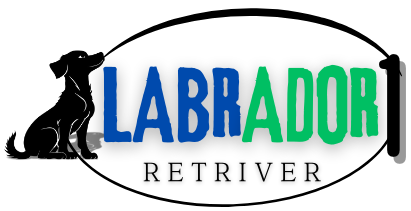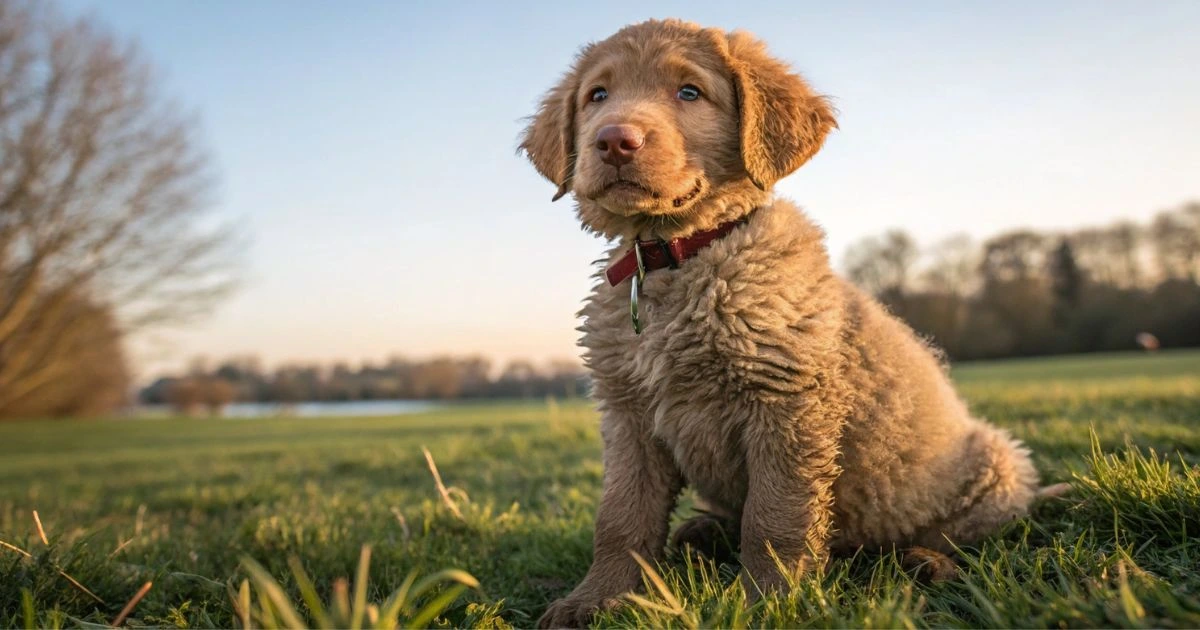How to Choose a Healthy Chesapeake Bay Retriever Puppy for Sale
You’re not just looking for a dog—you’re searching for a loyal friend, a family protector, a playful companion who fits perfectly into your world. Maybe you’ve envisioned peaceful walks through the woods, days at the lake, or the sound of happy paws greeting you at the door. The journey to finding the right Chesapeake Bay Retriever puppy for sale isn’t just about making a purchase. It’s about making a lifelong commitment—and it all begins with choosing a healthy pup from the right source.
Known for their intelligence, loyalty, and tenacity, Chesapeake Bay Retrievers make excellent companions. But it takes more than a fast internet search to find the ideal puppy. It requires a little heart, patience, and research.
Let’s walk through every step you need to take to ensure the Chesapeake Bay Retriever puppy you choose is healthy, happy, and ready to grow with you.
Table of Contents
Why Chesapeake Bay Retrievers Are One-of-a-Kind
A Breed with Purpose and Passion
Originating from the chilly shores of the Chesapeake Bay, this breed was designed to retrieve waterfowl in freezing conditions. Their endurance, intelligence, and strong swimming skills set them apart. Whether you’re an outdoors enthusiast, a family with active kids, or someone who simply wants a devoted companion, this breed adapts well.
Traits You’ll Grow to Love
- Coat: Dense, oily, and water-resistant—ideal for swimmers.
- Temperament: Protective yet gentle, loyal but independent.
- Energy: High stamina; loves activities, especially those involving water.
Finding Reputable Chesapeake Bay Retriever Puppies for Sale
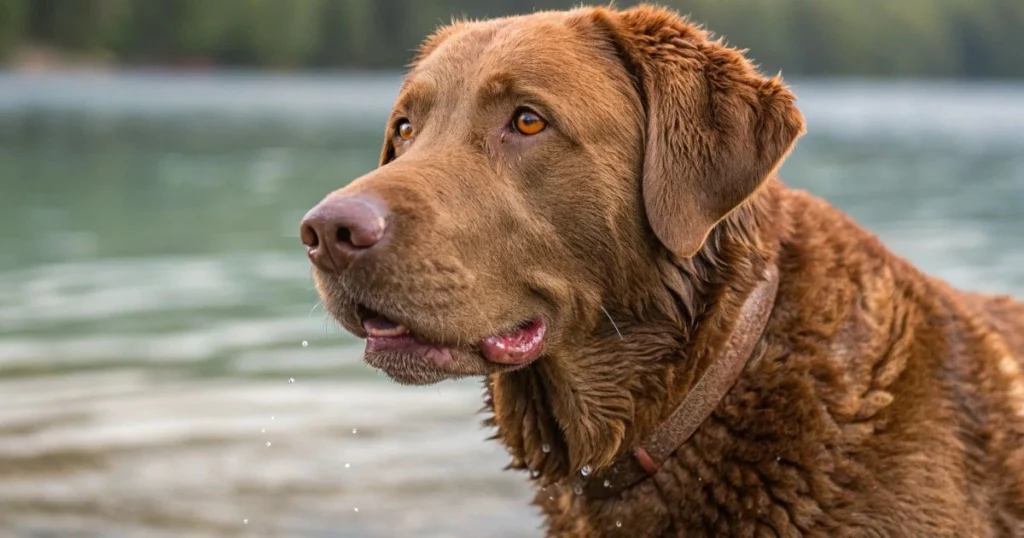
Why the Right Source Matters
With popularity comes a dark side—puppy mills and unregulated breeders. While it might be tempting to go with the quickest option, that route often leads to heartbreak.
Reputable Breeder Checklist:
- Registered with AKC or a similar kennel club.
- Offers health screenings and certifications.
- Allows in-person visits or virtual walkthroughs.
- Provides vet records and clear contracts.
- Encourages post-sale communication.
Warning Signs of Puppy Mills
- Dirty, cramped environments.
- Lack of medical history.
- Puppies separated too early.
- “Cash only” policies with no documentation.
- Reluctance to show parent dogs.
Ask These Questions Before You Buy
- Can I meet the puppy’s parents?
- What vaccinations and vet checks has the puppy received?
- Are health screenings available for hereditary issues?
- What’s the puppy’s socialization experience so far?
- Do you offer a return policy or health guarantee?
Health is More Than Just a Vet Check
Genetic Health Issues to Be Aware Of
Like any breed, Chesapeake Bay Retrievers are prone to specific health conditions. Knowing what to look for empowers you to ask the right questions and spot warning signs early.
Common Genetic Risks:
- Hip Dysplasia: Abnormal hip joint development; causes arthritis or pain.
- Progressive Retinal Atrophy (PRA): Leads to blindness.
- Degenerative Myelopathy: Spinal cord disorder affecting mobility.
- Von Willebrand’s Disease: A blood clotting disorder.
Visual Health Checklist at First Meeting
- Bright, clear eyes with no discharge.
- Clean ears (no foul odor or debris).
- Glossy, smooth coat—no bald patches or sores.
- Curious, energetic behavior.
- Balanced gait; no limping or stiffness.
Certificates That Matter
- OFA: Screens for hip and elbow issues.
- CERF: Evaluates eye health.
- DNA Testing: Identifies breed-specific conditions.
Don’t just take the breeder’s word—ask for physical or digital copies of these records.
Understanding Growth: Weight, Age, and Milestones

Keeping track of growth helps ensure your pup is developing as expected. It also sets the stage for feeding and training routines.
| Age Range | Average Weight | What to Expect |
|---|---|---|
| 8 weeks | 10–15 lbs | Time to bring home; early bonding begins |
| 3 months | 20–30 lbs | Puppy socialization window |
| 6 months | 35–50 lbs | Active play and training crucial |
| 12 months | 55–80 lbs (adult) | Personality and routines solidify |
Your Chesapeake will grow fast, so staying ahead with vet visits and proper nutrition is key.
Choosing a Puppy That Matches Your Lifestyle
Every Puppy Has a Personality
During a visit, you’ll notice differences in behavior. Some pups will charge right up to you; others may hang back. The goal isn’t to find “the best” but the one that fits you.
Temperament Types:
- The Explorer: Fearless, independent, high-energy. Needs structured training and stimulation.
- The Observer: Quiet, thoughtful, a bit reserved. Ideal for quieter households.
- The Social Butterfly: Craves affection, sticks close, easy to train.
Match your lifestyle. Are you active or more relaxed? Have kids or other pets? Choose accordingly.
Feeding Your Chesapeake Right from Day One
Nutrition shapes your puppy’s health, coat, development, and energy levels. Start strong with balanced meals tailored to age and weight.
Feeding Guide by Age
| Age | Food Type | Meals per Day |
|---|---|---|
| 8–12 weeks | Puppy kibble + wet mix | 4 |
| 3–6 months | High-protein puppy food | 3 |
| 6–12 months | Large breed puppy food | 2 |
| 1 year+ | Adult dog food | 2 |
What to Look for in Healthy Food
- First ingredient is real meat (chicken, turkey, or salmon).
- Whole grains like oatmeal or brown rice.
- DHA and omega-3 for brain and coat development.
- No artificial flavors, colors, or by-products.
Recommended Brands: Wellness Core, Blue Buffalo, Orijen (adjust to vet guidance).
There are warning signs that should make you stop.
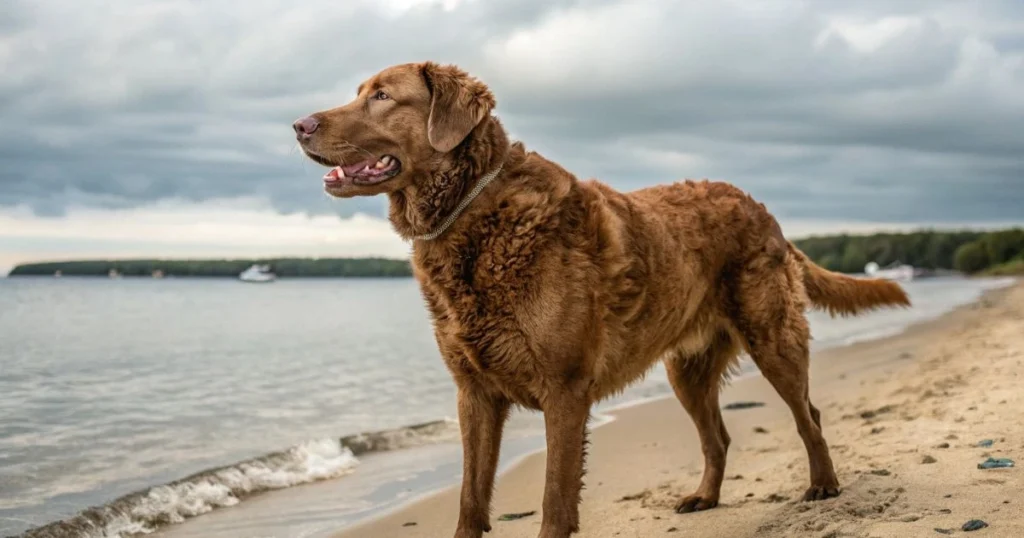
Choosing a healthy Chesapeake Bay Retriever puppy means knowing what not to accept.
Behavioral Red Flags
- Shaking, hiding, or cowering in corners.
- Aggression towards people or littermates.
- Excessive panting or lethargy.
Environmental Concerns
- Filthy conditions or overcrowding.
- No toys, beds, or food bowls visible.
- Puppies confined to cages or sheds.
Breeder Behavior to Avoid
- Refuses to provide health records.
- Avoids answering detailed questions.
- Pushes for a fast sale.
Walk away if anything feels off. Your gut is often your best guide.
Get Your Home Puppy-Ready
Bringing home your Chesapeake Bay Retriever isn’t just exciting—it’s a major adjustment for you and the pup. Set up a safe, comfortable environment in advance.
Puppy-Proofing Essentials:
- Remove wires, cords, and small chewables.
- Use baby gates to block stairs or off-limit rooms.
- Store cleaning supplies and trash bins securely.
Must-Have Items:
- Crate (safe den + house-training tool)
- Chew-resistant toys (Kong, Nylabone)
- Stainless steel food and water bowls
- Leash, collar with ID tag, and harness
- Puppy training pads and enzymatic cleaner
Invest in the right tools now to avoid stress later.
Your Path to a Healthy, Happy Life Together
Choosing the right Chesapeake Bay Retriever puppy isn’t a decision you rush. It’s a thoughtful, emotional process that sets the stage for years of love and adventure. When you prioritize health, temperament, and ethical sourcing, you’re not just bringing home a puppy—you’re welcoming a lifetime of loyalty.
Take your time, ask hard questions, and trust your instincts. The right puppy is out there waiting for you to find them.
Common Questions Regarding For Sale Chesapeake Bay Retriever Puppies
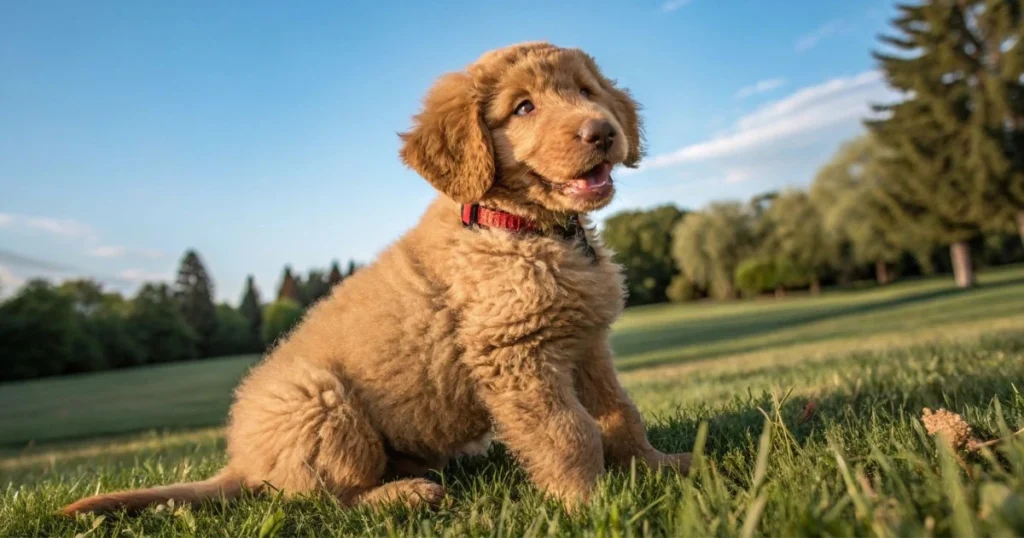
What makes Chesapeake Bay Retrievers different from other retrievers?
They’re more independent, highly protective, and better suited for cold-weather and water environments. Ideal for outdoor lifestyles.
How much do Chesapeake Bay Retriever puppies cost?
Depending on lineage and breeder, expect to pay between $800–$2,500. Always prioritize health records over price.
When can I bring my puppy home?
8–10 weeks is ideal. This ensures proper development, weaning, and socialization from the breeder.
Do Chesapeake Bay Retrievers get along well with children and other animals?
Yes—with early training and socialization, they adapt well to children and other animals.
What should I bring when picking up my puppy?
Crate, water bowl, towel (for accidents), leash, ID tag, and some puppy-safe treats for the ride home.
Is Your Search for the Ideal Chesapeake Bay Retriever Puppy Complete?
Don’t settle for shortcuts. Your best friend deserves the best start in life. Now that you know exactly what to look for, you’re ready to explore the best Chesapeake Bay Retriever puppies for sale with confidence and clarity.
Take the next step—connect with a reputable breeder, ask the right questions, and get ready to meet your new best friend.
